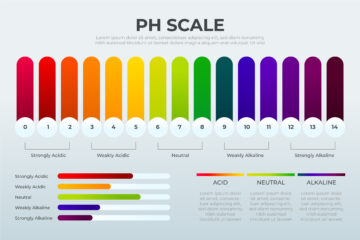In our quest to maintain a high standard of hygiene, whether in healthcare facilities, the food industry, or our own homes, knowledge of the cleaning process plays a critical role. A central part of this knowledge is understanding the “Sinner’s Circle.” This model, designed to illustrate the various factors that affect the effectiveness of the cleaning process, is a cornerstone in hygiene management and cleaning.
What is Sinner’s Circle?
Sinner’s Circle, named after the German scientist Herbert Sinner, describes the four basic factors that affect the effectiveness of the cleaning and disinfection process: time, temperature, chemicals, and mechanical action. These factors are interdependent, meaning that a change in one factor can compensate for or require adjustments in the others to achieve the desired result in the cleaning process.
Time
Time is, for obvious reasons, a critical factor in the cleaning process. The effectiveness of a cleaning agent increases with longer exposure time to the surfaces or instruments to be cleaned. However, it is important to balance the time effectively, as too long exposure time can lead to material damage or unnecessary resource use.
Furthermore, time affects how much dirt one can remove and the thoroughness with which one cleans. For example, if you are cleaning under and over all surfaces and moving items that are in the way (e.g., books on a shelf), the cleaning time can increase significantly.
Temperature
Higher temperatures accelerate chemical reactions and can improve the effectiveness of cleaning agents. However, this applies within specific limits because too high temperatures can damage some surfaces or reduce the effectiveness of some cleaning agents.
Chemicals
The choice of chemicals is crucial – in the context of cleaning, we are naturally talking about cleaning agents. There is a wide range of cleaning agents available, each with its own advantages and limitations. It is important to choose an agent that is effective against the specific microorganisms you want to eliminate while being safe for the user and the surface being treated.
In a previous blog post, we wrote about different pH values and the importance of choosing the right pH value depending on the material to be cleaned and the purpose (e.g., removing fat, descaling).
Mechanical actions
Mechanical action, such as scrubbing, helps to physically remove dirt, microorganisms, and organic material from surfaces. This factor is particularly important when it comes to cleaning heavily contaminated surfaces or where biofilms may have formed.
Conclusion
Sinner’s Circle illustrates that a reduction in one of its factors must be balanced with an increase in one or more of the others to maintain an effective cleaning process. If you want to use a smaller amount of chemicals, for example, you may need to scrub for a longer period.
Understanding the Sinner’s Circle is essential for anyone working in cleaning. By applying this knowledge, we can ensure that our cleaning routines and processes are as effective as possible, protecting both our health and our environment. It is a reminder that no single factor works in isolation, but it is the interplay between time, temperature, chemicals, and mechanical action that constitutes the key to a successful cleaning process.
